How To Use Tableau AI

Tableau AI introduces powerful artificial intelligence and machine learning features into one of the world’s leading data visualization platforms. It enables users—from analysts to business users—to ask questions in natural language, discover insights, automate analytics tasks, and build better dashboards with trust, transparency, and ease.
To explore more AI-powered data tools, visit I Need AI.
What is Tableau AI
Tableau AI is a suite of AI enhancements now integrated into Tableau’s desktop, cloud, and mobile environments. It features tools like Tableau Agent (formerly Einstein Copilot), Tableau Pulse, Ask Data, and Explain Data. Built on Salesforce’s Einstein Trust Layer, it combines natural language capabilities with machine learning and predictive analytics to make insights accessible to users at all levels
Originally an independent BI tool, Tableau has become part of Salesforce and now leverages Einstein technologies for trusted, enterprise-ready AI .
Key Features
Ask Data
Type questions in plain language (e.g., “What were last month's sales per region?”) and receive instant visualizations. It supports synonyms and autocorrect and can be embedded in dashboards or portals venturebeat.com.
Explain Data
Select any data point, and Tableau runs statistical models in the background to generate explanations for outliers or trends, helping users uncover hidden insights .
Tableau Pulse
Pulse is an AI-enhanced feed of your key metrics, highlighting insights and delivering autogenerated summaries in natural language. It adapts over time to surface metrics most relevant to you
Tableau Agent
Tableau Agent is the core AI assistant that helps build charts, write calculations, explain formulas, and recommend visualizations—all via conversational prompts. It accelerates workflows and is available in Tableau Cloud and Desktop help.tableau.com+1tableau.com+1.
Predictions and Forecasting
Built-in predictive models allow users to forecast trends using time series analysis and regression models. These visualizations can be integrated seamlessly into dashboards trailhead.salesforce.com+1restack.io+1.
AI-Powered Automation
Automation features include alerting, scheduled report generation, and refreshed dashboards—all triggered by AI-detected anomalies or thresholds .
How To Use Tableau AI
Step 1: Enable AI Features
If using Tableau Cloud, enable AI features by selecting them in the site settings under “AI in Tableau.” A trial period is available for first-time users.
Step 2: Ask Questions Directly
Use Ask Data to type plain-language questions and receive instant charts. Use Tableau Agent to write calculations or build maps using conversational prompts.
Step 3: Interpret Data Points
Select data points in your visualizations and use Explain Data to get AI-powered explanations for what’s driving those values.
Step 4: Monitor with Pulse
Set up your key metrics and let Tableau Pulse deliver automated insights and summaries. You’ll receive updates through dashboards, emails, or messaging platforms.
Step 5: Automate Workflows
Configure alert thresholds and automated tasks based on AI-detected patterns or user-defined criteria to keep dashboards current and responsive.
What You Should Do
-
Use conversational prompts to build and explore visuals
-
Enrich dashboards by explaining unexpected data points
-
Leverage Pulse for proactive insight delivery
-
Experiment with predictive modeling within dashboards
-
Turn on AI automation to save time and maintain accuracy
What You Should Not Do
-
Don’t rely on AI without verifying results with domain knowledge
-
Avoid ignoring performance or data quality—even intelligent tools depend on clean data
-
Don’t limit AI to novice users—professionals can benefit from faster workflows
-
Avoid blind trust—use AI explanations in context and test them thoroughly
What Users Are Saying
On Reddit, users praised Pulse but warned that foundational features still need polish:
“I am also curious… I have had the opportunity… but I’m curious if others have done the same and what their opinion is?”
Others expressed skepticism:
“It promised a lot, and it really, really sucked… you still need to know when the answer you get back is wrong.” reddit.com
These comments suggest that while AI tools help, they require careful tuning and oversight.
Why Tableau AI Is a Smart Addition
Tableau AI brings powerful assistant-like capabilities to data analytics. With tools for natural-language queries, statistical explanations, proactive insights, and workflow automation, it supports a wide range of users—especially those who may not be data experts but need to understand data-driven decisions faster. Built on enterprise-grade AI and governance, Tableau AI enhances the core visualization strengths of Tableau while ensuring trust and accuracy.
To explore more AI-powered analytics and visualization tools, visit I Need AI.







